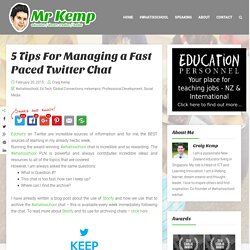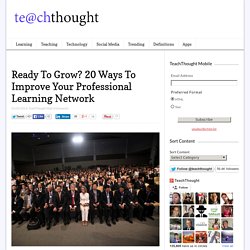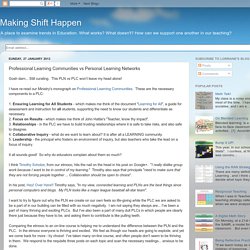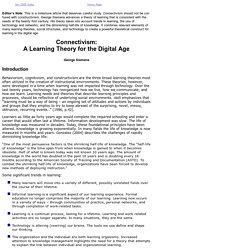

5 Tips For Managing a Fast Paced Twitter Chat. Edchat’s on Twitter are incredible sources of information and for me, the BEST sources of learning in my already hectic week.

Running the award winning #whatisschool chat is incredible and so rewarding. The #whatisschool PLN is powerful and always contributes incredible ideas and resources to all of the topics that are covered. However, I am always asked the same questions: What is Question #? This chat is too fast, how can I keep up? I have already written a blog post about the use of Storify and how we use that to archive the #whatisschool chat – this is available every week immediately following the chat. Now it is time to answer the question “This chat is too fast, how can I keep up?” The reality is, that in a popular chat like #whatisschool, you probably won’t be able to keep up.
For me the #whatisschool hour is my most intense hour of the week, but by far the most rewarding. The fact remains, chats are fast! Step 6: Using Curation tools as part of your PLN. Welcome to the sixth step in our free professional learning series on building your PLN.

In this activity you will explore: What is content curation? How to get started What is content curation? We are living in an era of information overload. A person with good content curation skills saves us time by shifting through the vast abundance of content on the Internet to select the best, most relevant resource, on a specific topic or theme, which they organize, manage and collate for their own use and share with us. If you look closely at most educators with a high following on social networks like Twitter, Facebook, Google+ you’ll notice that most are great content curators and share excellent resources.
Photo Credit: Will Lion via Compfight Watch Harold Rheingold’s interview with Robin Good to learn more about curation. Benefits of curation The main reasons why educators curate content include: Wired for Collaboration. Beth Sanders and Pernille Ripp, along with countless other teachers from around the world, are “connected educators.”

Beth uses digital technologies “to tear down the walls of a traditional classroom”. An educator committed to social justice, her students share their voices with the world through class discussions held on Twitter. Pernille has brought networked learning to a global level — in 2010, she began the Global Read Aloud program, which connected more than 144,000 students, representing thirty countries from six continents. They are exemplars of connected educators, teachers who construct knowledge, collaborate, and interact with other educators all over the world via social media to develop networks to deepen understanding (Wong, 2013).
Connected educators embody Siemens’ connectivist theory emphasizing the need to collaborate, and learn through networks. …[W]hat we learn with has changed. Connected educators are redefining the role of teacher and student in the classroom. 20 Ways To Improve Your Professional Learning Network In 2013. Networking is a prime form of 21st century learning.

The world is much smaller thanks to technology. Learning is transforming into a globally collaborative enterprise. Take for example scientists; professional networks allow the scientific community to share discoveries much faster. Just this month, a tech news article showcased how Harvard scientists are considering that “sharing discoveries is more efficient and honorable than patenting them.”
This idea embodies the true spirit of a successful professional learning network: collaboration for its own sake. As educators, we aim to be connected to advance our craft. Learning networks are based on the theory of connectivism, or learning from diverse social webs. What are some ways to grow your PLN and improve the quality of your interactions?
1. 2. 3. 4. 5. 6. Making Shift Happen: Professional Learning Communities vs Personal Learning Networks. Gosh darn...

Still curating. This PLN vs PLC won't leave my head alone! I have re-read our Ministry's monograph on Professional Learning Communities. These are the necessary components to a PLC: 1. It all sounds good! I think Timothy Scholze, from our etmooc, hits the nail on the head in his post on Google+. In his post, Hey! I want to try to figure out why the PLN we create on our own feels so life-giving while the PLC we are asked to be a part of in our building can be filled with so much negativity. Jan05_01. Editor’s Note: This is a milestone article that deserves careful study.

Connectivism should not be con fused with constructivism. George Siemens advances a theory of learning that is consistent with the needs of the twenty first century. His theory takes into account trends in learning, the use of technology and networks, and the diminishing half-life of knowledge. It combines relevant elements of many learning theories, social structures, and technology to create a powerful theoretical construct for learning in the digital age. George Siemens Introduction Behaviorism, cognitivism, and constructivism are the three broad learning theories most often utilized in the creation of instructional environments. Learners as little as forty years ago would complete the required schooling and enter a career that would often last a lifetime. Personal Learning Networks. Dr. Will Deyamport - Use Twitter to Build your Personal Learning Network.